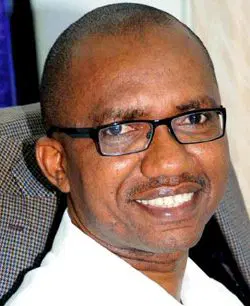Three major stories—and a half—offer insight into the roots of Nigeria’s stagnation, all strangely tied to energy and power.
THE MAMBILLA HYDROELECTRIC PROJECT: A SERIES OF FAILURES
One of the largest uncompleted projects, the Mambilla Hydroelectric Project, located in Gembu, Taraba State, epitomizes the nation’s energy struggles. Despite Nigeria’s repeated power grid collapses, including three times last week, the Minister of Power, Adebayo Adelabu, seems more occupied with excuses.
The PUNCH reported on October 21 that despite a $1.4 billion government loan, the national grid has collapsed 105 times over 10 years. An additional $2.9 billion World Bank loan may be on the horizon, risking further financial waste. The Mambilla project began in 2003 when President Olusegun Obasanjo visited China’s Three Gorges Dam, aiming to replicate it on a smaller scale for Nigeria. Planned to add 3,050 MW of power at a contract cost of $6 billion, the project soon became bogged down by internal politics and unfulfilled promises.
Dr. Olu Agunloye awarded the contract to Sunrise Power in 2007, but under a different government in 2009, disputes began over project management. By 2015, Buhari canceled the project, prompting lawsuits, arbitration, and further delays. Over a decade later, the Mambilla project remains unfulfilled, its potential power, infrastructure, and job benefits lost in bureaucratic struggles.
WILBROS: FROM PROMISE TO DISASTER
Wilbros, a key player in oil and gas in Port Harcourt, was once responsible for building the West African Gas Pipeline. When corruption allegations involving $6 million in bribes surfaced in 2008, the EFCC intervened, implicating top officials of the ruling PDP. Despite its critical role, Wilbros was dismantled instead of isolating and prosecuting guilty individuals, leaving its assets wasted and the pipeline project incomplete. The consequences were dire for the region’s energy competitiveness, with the World Bank highlighting the economic benefits this pipeline would have brought by providing cheaper, cleaner gas for power generation.
PAN OCEAN’S OVERBORROWING WOES
Pan Ocean’s bold gas project to support the Escravos-Lagos Pipeline System was doomed by financial mismanagement. Under its chairman, Dr. Festus Fadeyi, the company over-leveraged itself through Skye Bank, amassing debts exceeding N240 billion. Following government intervention in 2015, Pan Ocean’s oil leases were revoked, and assets reverted to the NNPCL. Sadly, these assets became largely neglected, fulfilling neither public nor private interests.
AJAOKUTA STEEL: A MONUMENT TO WASTE
The unfinished tale of the Ajaokuta Steel Company, a N4 trillion asset, and Nigeria’s four non-functional state-owned refineries represent colossal examples of how ego, greed, and poor judgment exacerbate the country’s energy struggles. Properly managed, these resources could reduce the nation’s current suffering.
Through these projects, Nigeria’s entanglement with power and energy failures becomes clear, underscoring the need for more effective management and accountability to transform potential into prosperity.

